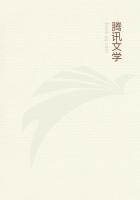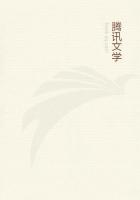There were young men and old, all had been harmless and inoffensive in their lives, and--all had been bibliophiles. A dagger in an invisible hand had reached their hearts but the assassin had spared their purses, money, and rings. An organised search was made in the city, and the shop of Don Vincente was examined. There, in a hidden recess, the police discovered the copy of "Ordinacions per los gloriosis reys de Arago," which ought by rights to have been burned with the house of its purchaser. Don Vincente was asked how he got the book. He replied in a quiet voice, demanded that his collection should be made over to the Barcelona Library, and then confessed a long array of crimes. He had strangled his rival, stolen the "Ordinacions," and burned the house. The slain men were people who had bought from him books which he really could not bear to part with. At his trial his counsel tried to prove that his confession was false, and that he might have got his books by honest means. It was objected that there was in the world only one book printed by Lambert Palmart in 1482, and that the prisoner must have stolen this, the only copy, from the library where it was treasured. The defendant's counsel proved that there was another copy in the Louvre; that, therefore, there might be more, and that the defendant's might have been honestly procured. Here Don Vincente, previously callous, uttered an hysterical cry. Said the Alcalde:-"At last, Vincente, you begin to understand the enormity of your offence?" "Ah, Senor Alcalde, my error was clumsy indeed. If you only knew how miserable I am!" "If human justice prove inflexible, there is another justice whose pity is inexhaustible. Repentance is never too late." "Ah, Senor Alcalde, but my copy was not unique!"With the story of this impenitent thief we may close the roll of biblioklepts, though Dibdin pretends that Garrick was of the company, and stole Alleyne's books at Dulwich.
There is a thievish nature more hateful than even the biblioklept.
The Book-Ghoul is he who combines the larceny of the biblioklept with the abominable wickedness of breaking up and mutilating the volumes from which he steals. He is a collector of title-pages, frontispieces, illustrations, and book-plates. He prowls furtively among public and private libraries, inserting wetted threads, which slowly eat away the illustrations he covets; and he broods, like the obscene demon of Arabian superstitions, over the fragments of the mighty dead. His disgusting tastes vary. He prepares books for the American market. Christmas books are sold in the States stuffed with pictures cut out of honest volumes. Here is a quotation from an American paper:-"Another style of Christmas book which deserves to be mentioned, though it is out of the reach of any but the very rich, is the historical or literary work enriched with inserted plates. There has never, to our knowledge, been anything offered in America so supremely excellent as the $5000 book on Washington, we think--exhibited by Boston last year, but not a few fine specimens of books of this class are at present offered to purchasers. Scribner has a beautiful copy of Forster's 'Life of Dickens,' enlarged from three volumes octavo to nine volumes quarto, by taking to pieces, remounting, and inlaying. It contains some eight hundred engravings, portraits, views, playbills, title-pages, catalogues, proof illustrations from Dickens's works, a set of the Onwhyn plates, rare engravings by Cruikshank and 'Phiz,' and autograph letters. Though this volume does not compare with Harvey's Dickens, offered for $1750 two years ago, it is an excellent specimen of books of this sort, and the veriest tyro in bibliographical affairs knows how scarce are becoming the early editions of Dickens's works and the plates illustrating them. {4}({4} No wonder the books are scarce, if they are being hacked to pieces by Grangerites.) Anything about Dickens in the beginning of his career is a sound investment from a business point of view. Another work of the same sort, valued at $240, is Lady Trevelyan's edition of Macaulay, illustrated with portraits, many of them very rare. Even cheaper, all things considered, is an extra-illustrated copy of the 'Histoire de la Gravure,' which, besides its seventy-three reproductions of old engravings, is enriched with two hundred fine specimens of the early engravers, many of the impressions being in first and second states. At $155 such a book is really a bargain, especially for any one who is forming a collection of engravings. Another delightful work is the library edition of Bray's 'Evelyn,' illustrated with some two hundred and fifty portraits and views, and valued at $175; and still another is Boydell's 'Milton,' with plates after Westall, and further illustrations in the shape of twenty-eight portraits of the painter and one hundred and eighty-one plates, and many of them before letter. The price of this book is $325."But few book-ghouls are worse than the moral ghoul. He defaces, with a pen, the passages, in some precious volume, which do not meet his idea of moral propriety. I have a Pine's "Horace," with the engravings from gems, which has fallen into the hands of a moral ghoul. Not only has he obliterated the verses which hurt his delicate sense, but he has actually scraped away portions of the classical figures, and "the breasts of the nymphs in the brake."The soul of Tartuffe had entered into the body of a sinner of the last century. The antiquarian ghoul steals title-pages and colophons. The aesthetic ghoul cuts illuminated initials out of manuscripts. The petty, trivial, and almost idiotic ghoul of our own days, sponges the fly-leaves and boards of books for the purpose of cribbing the book-plates. An old "Complaint of a Book-plate," in dread of the wet sponge of the enemy, has been discovered by Mr. Austin Dobson:- {5}({5} These lines appeared in "Notes and Queries," Jan. 8, 1881.)















